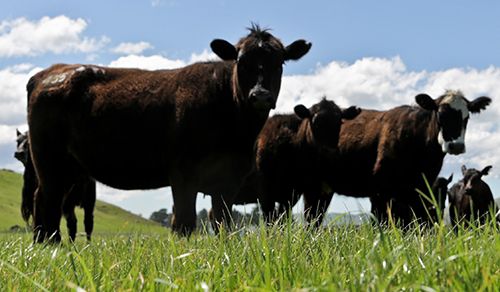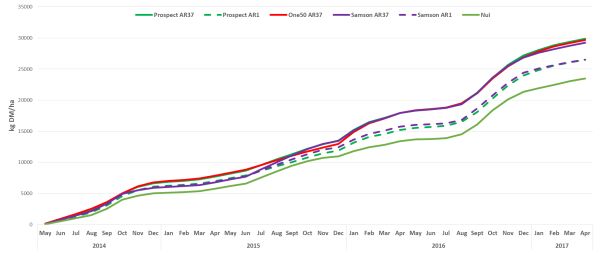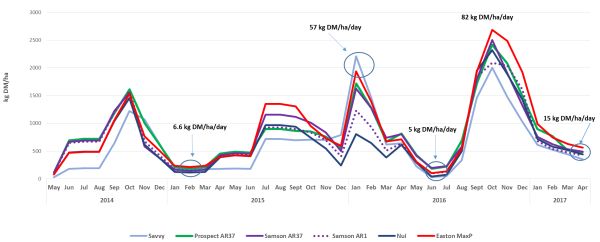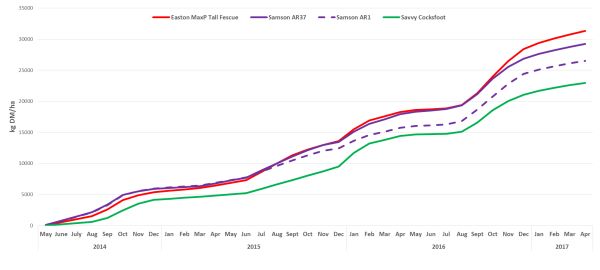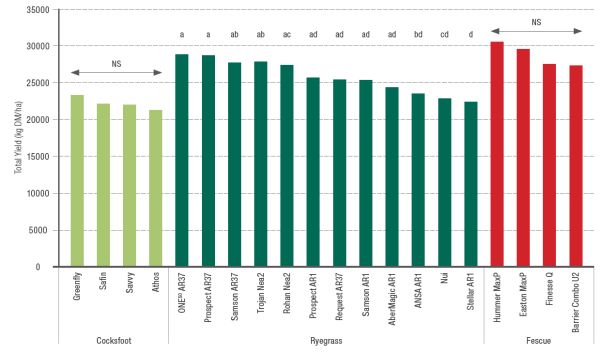Southburn Trial Site
Interim Data. Trial drilled 18th February, 2014
Figure 1: Southburn Endophyte Effects - Accumulated Yield (kg DM/ha) of selected cultivars over three and a half years
The effects of endophyte at Southburn have become very apparent over the past 2 years.
Prospect AR37, ONE50 AR37 and Samson AR37 have been similar over the whole period and together top the accumulated yield after three and a half years. Prospect AR1 and Samson AR1 kept in line with their AR37 equivalents for the first year, and then started to separate out after the first summer. The result of Nui could represent ‘variety not stated’ (VNS) ryegrass with variable endophyte status.
Figure 2: Southburn monthly yield (kg DM/ha) of selected examples of different species over three and a half years
The seasonal differences between the various species at Southburn have performed to expectation (Figure 2).
While the fescues started off slowly, their second and third spring were very dominant along with showing their strength over the summer of 2016/17 where soil moisture was sufficient.
Samson AR37 and AR1 follow the same growth pattern, however Samson AR37 out performs Samson AR1 under periods of stress and after three and a half years it has resulted in Samson
AR37 yielding 2351 kg DM/ha more than Samson AR1.
Figure 3: Southburn species differences - Accumulated yield (kg DM/ha) of selected examples of different species over three and a half years
Figure 3 shows selected cultivars of different species and their different accumulated yield over three and a half years. Both the Easton MaxP tall fescue and Savvy cocksfoot are slower to
establish than ryegrass. After one and a half years Easton MaxP tall fescue had caught up to the total accumulated growth of Samson AR37 and has shown very good growth in this challenging environment.
Figure 4: Southburn total yield (kg DM/ha) to the end of autumn 2017
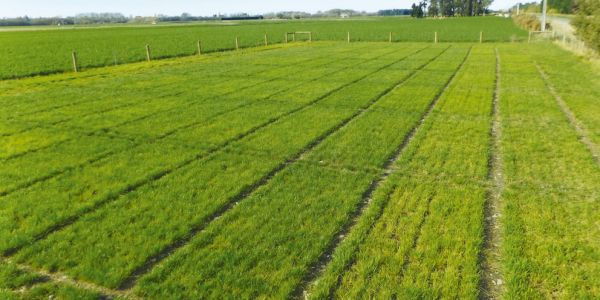
Back to About Agricom
About Agricom